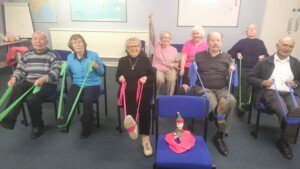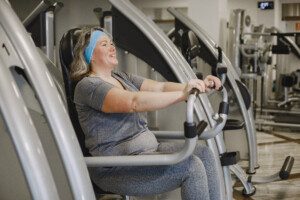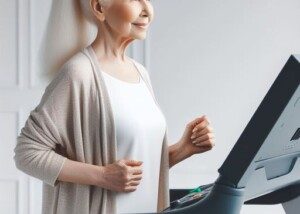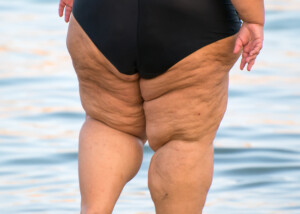
Elderly people need to be stronger on their feet; seated exercises won’t cut it; most of their exercise should be done standing.
Elderly people who are still walking without assistance should be doing mostly standing exercises, rather than group classes where the exercises are done while seated.
This isn’t about performing a barbell press overhead while seated, or curling dumbbells while seated.
It’s about the so-called chair exercises that are commonly done by older people in a group instruction setting.
Many of the participants walk into these classes without a walker or cane.

Such able-bodied senior adults do not live their lives out of a motorized scooter. It makes little sense, then, that they’d be doing exercises out of a chair.
“Standing exercise improves core strength, balance and coordination,” says Monica Charlton, a senior exercise specialist and certified Silver Sneakers/personal trainer out of New Orleans.
“Standing exercise is preferable to sitting exercise because it is weight-bearing, which is the only type of exercise that can help strengthen bone density.
“Seated exercises carry a lower risk of falling, but also do less to prevent falls in the long run.”
As a former personal trainer and one who has rehabbed my elderly mother from a hip fracture, I strongly recommend an emphasis on standing exercises for seniors.
What about seated resistance machines and dumbbell exercises from a chair?
These include the leg press, leg extension, lat pull-down, any rowing-type equipment, overhead press equipment and chest press equipment, plus pushing dumbbells overhead or lifting them to the side.
All senior age men and women should use resistance machines, as they stabilize the body during strength training and isolate muscle groups.

Pexels, Gustavo Fring
Working with free weights or tension bands while seated is also very beneficial.
But there is no real benefit to doing “exercises from a chair” if you have the mobility to walk around your house, let alone a store or mall.
Even for older people who tire quickly after walking a short distance, doing exercises from a chair would be an inferior approach to improving their mobility, stamina and neuromuscular coordination.
You’re far more likely to fall (either from a slip or a knee giving way) while standing or walking, rather than topple out of a chair!
Thus, your exercise program should include many moves while standing or walking:
- Stationary or walking lunge (with or without holding a weight)
- Sideways and backwards stationary lunge
- Body weight or light dumbbell squat
- Step-ups
- Sustained staircase climbs (with short breaks as needed)
- Aerobics and group fitness classes. Never mind that all the younger participants have two risers under their stepper. You can use just the stepper alone and enjoy the class!
Exercising from a chair eliminates any chance to improve core strength, stability and balance while on your feet — which you will sooner or later be on when the “from a chair” exercise session is over.
The “from a chair” approach is a downgrade from an older person’s baseline — assuming they do not have difficulty with actual mobility — though they may tire quickly from walking due to heart disease or excess weight.
- Chair exercises will only improve one’s ability to do those particular exercises while seated in the chair.
- They will do nothing to ignite improvement in doing things while standing or walking.
According to cdc.gov, one out of three people over 65 will fall in a given 12 month period—and these are falls while they are on their feet.
Exercise while seated in a chair will NOT increase stability on one’s feet.
 Monica Charlton’s personal training services include fitness/body composition assessments, nutrition planning, running programs and customized programs for clients with disabilities or injuries, as well as older and mainstream clients.
Monica Charlton’s personal training services include fitness/body composition assessments, nutrition planning, running programs and customized programs for clients with disabilities or injuries, as well as older and mainstream clients.
 Lorra Garrick is a former personal trainer certified through the American Council on Exercise. At Bally Total Fitness she trained women and men of all ages for fat loss, muscle building, fitness and improved health.
Lorra Garrick is a former personal trainer certified through the American Council on Exercise. At Bally Total Fitness she trained women and men of all ages for fat loss, muscle building, fitness and improved health.
.









































